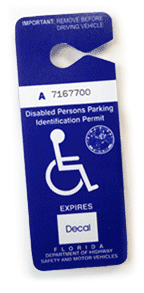The Boomer generation is destined to be the handicapped parking generation. I got my handicapped parking pass sooner than expected. Happily, it’s temporary.
 The blue placard with the wheelchair logo is the result of my first snowshoe hike in the mountains in early February. Snowshoeing is easy, they told me. If you can walk you can snowshoe, they said. Well, some of us cannot snowshoe and chew gum at the same time. I tripped, went down and felt the tendon above my knee snap. A few days later they wheeled me into surgery at the local veterans’ hospital.
The blue placard with the wheelchair logo is the result of my first snowshoe hike in the mountains in early February. Snowshoeing is easy, they told me. If you can walk you can snowshoe, they said. Well, some of us cannot snowshoe and chew gum at the same time. I tripped, went down and felt the tendon above my knee snap. A few days later they wheeled me into surgery at the local veterans’ hospital.
I was impressed with the VA hospital, by the way. I received excellent care and was treated with more respect than my late wife got in a succession of private hospitals. It was fun to swap war stories with my roommates, and I was reminded of how lucky I am when the x-ray technician asked if I had any shrapnel or steel plates in my body.
When I came home from the hospital I knew what to expect because my wife was disabled for many years. I have her to thank for our decision to buy a one-story house with a walk-in shower. I had it easy because my knee was not especially painful, just immobilized in a knee brace that kept my left leg straight.
Being disabled required reorganizing my lifestyle. After years of walking across the house on impulse, I learned to plan every perambulation by wheelchair or walker: Do I have everything I need before leaving the bedroom in the morning? What else do I expect to use from the kitchen cabinet that’s within reach? I forwarded incoming phone calls to my cell phone and moved frequently used objects from high shelves to my desk and countertop.
How do you put on a sock when you can’t reach your foot? One of my wife’s handicapped gadgets, a plastic half-pipe with straps, solved that problem. A long-handled grabber device helped me retrieve the morning paper and put the cats’ food dishes on the floor. I learned to bathe by sitting on a shower seat, sticking my towel-wrapped bum leg out the shower door and using the hand shower.
Carrying things is a challenge when you need both hands to hold yourself up on a walker or crutches. A travel mug helped me transport my ever-present coffee or soda from the kitchen to my desk without spills. Dining entailed a multi-step process to move the plate from one kitchen counter to another and eventually to the table.
Fear of running out of reading material was a handy excuse to buy a Kindle e-book reader, which also fits neatly into a pocket of my cargo pants for those long waits at the doctor’s office.
I don’t need my left leg to drive, but was housebound for a while because my immobilized leg would not fit through the door opening of my Subaru. Eventually I was able to tilt the power seat back, do some gymnastics to maneuver my leg into the car and start using that handicapped parking pass. The electric carts stores provide for the disabled are handy but are too slow – and are not much help in reaching the top grocery shelf or opening the tall, glass doors in the frozen food aisle.
Two months after my surgery, my left leg is no longer immobilized in a brace and I will soon switch from a crutch to a cane. I expect to stop using my handicapped parking pass long before it expires. In the meantime, it’s handy to park close to any building (except the VA hospital, where the number of disabled vets far exceeds the available parking space).
I’m grateful my disability is temporary, and that my introduction to disabled living taught me some lessons that will be helpful in my inevitable geriatric future.
